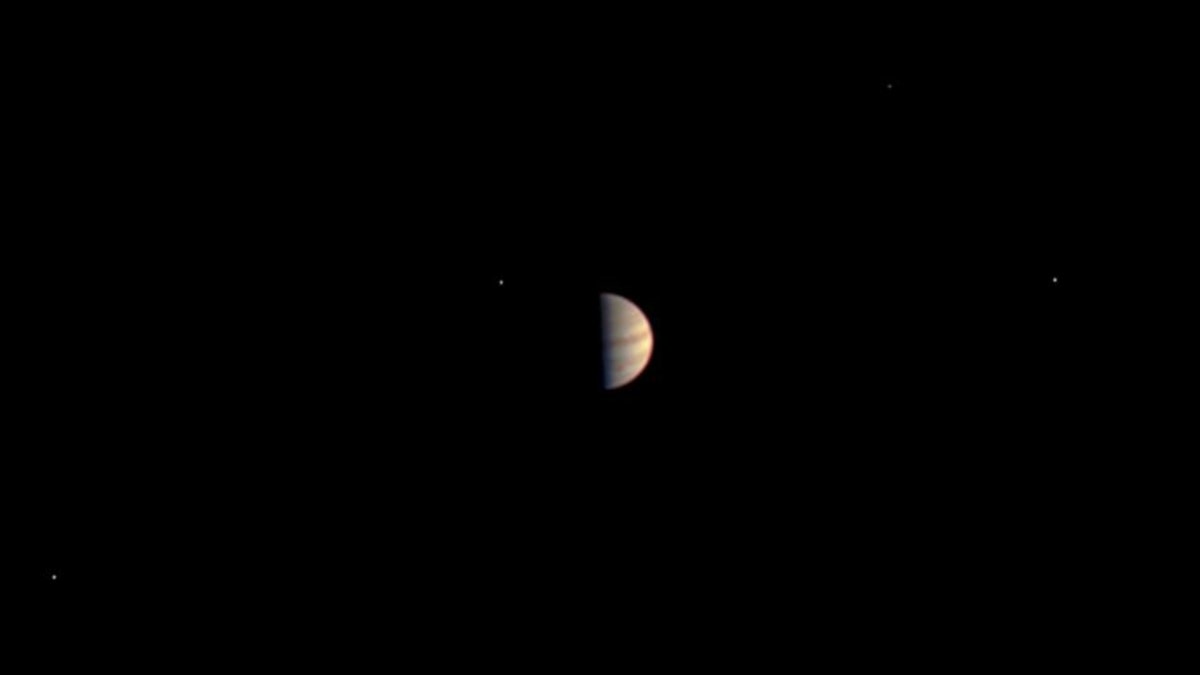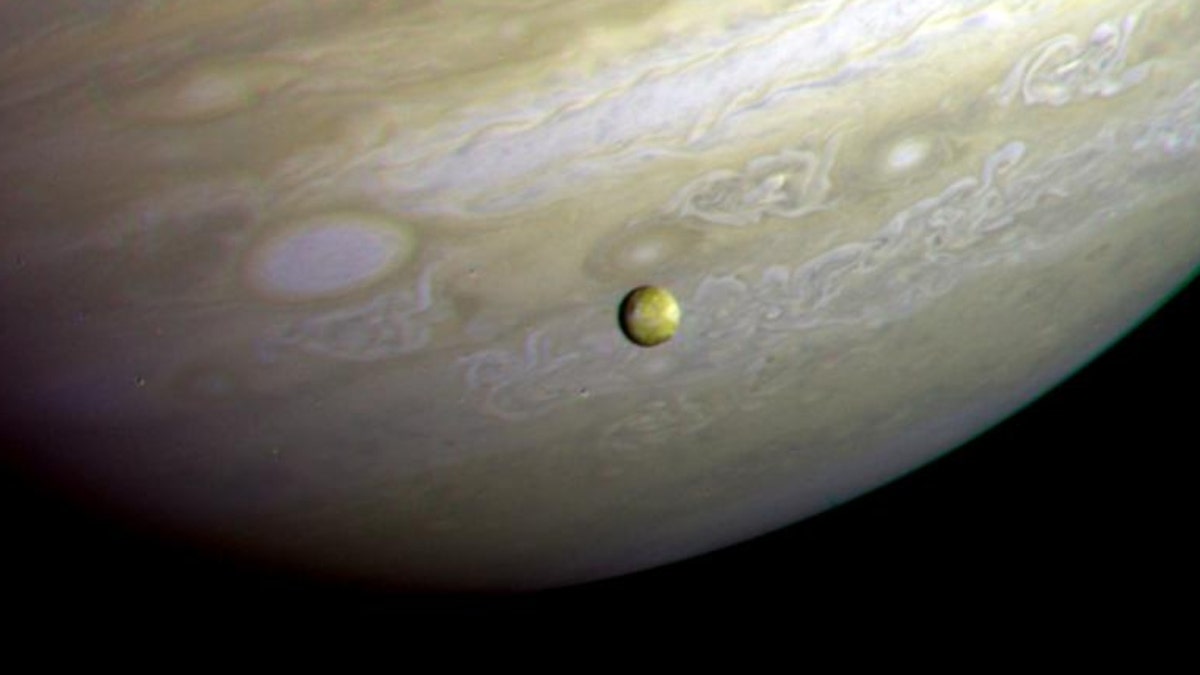Jupiter's 'dramatic' features from NASA's Juno mission wow the internet
Jupiter's 'dramatic' features from NASA's Juno mission wow the internet
Jupiter will make its closest approach to Earth in the last 59 years on Monday night.
According to NASA, stargazers can expect excellent views when the giant planet reaches opposition.
Opposition occurs when an astronomical object rises in the east as the sun sets in the west, placing the object and the sun on opposite sides of Earth.
Jupiter's opposition happens every 13 months.
MARS PERSEVERANCE ROVER COLLECTS ORGANIC-RICH SAMPLES IN JEZERO CRATER
It makes the planet appear larger and brighter than any other time of the year.

This photo of Jupiter, taken from the Hubble Space Telescope on June 27, 2019, features the Great Red Spot, a storm the size of Earth that has been raging for hundreds of years. (Credits: NASA, ESA, A. Simon (Goddard Space Flight Center), and M.H. Wong (University of California, Berkeley))
Jupiter's closest approach to Earth rarely coincides with opposition.
Because Earth and Jupiter do not orbit the sun in perfect circles, the planets pass each other at different distances throughout the year.
At its closest approach, Jupiter will be approximately 367 million miles away from Earth.
It was about the same distance in 1963.

This is the final view taken by the JunoCam instrument on NASA's Juno spacecraft before Juno's instruments were powered down in preparation for orbit insertion. Juno obtained this color view on June 29, 2016, at a distance of 3.3 million miles (5.3 million kilometers) from Jupiter. (Credit: NASA/JPL-Caltech/SwRI/MSSS)
US SPACE FORCE UNVEILS OFFICIAL SONG 'SEMPER SUPRA'
At its farthest point, Jupiter is around 600 million miles away from Earth.
"With good binoculars, the banding (at least the central band) and three or four of the Galilean satellites (moons) should be visible," Adam Kobelski, a research astrophysicist at NASA’s Marshall Space Flight Center, said in a statement. "It’s important to remember that Galileo observed these moons with 17th century optics. One of the key needs will be a stable mount for whatever system you use."

This photograph of the Southern Hemisphere of Jupiter was obtained by Voyager 2 on June 25, 1979, at a distance of 12 million kilometers (8 million miles). (Credit: NASA/JPL)
Kobelski recommends using a larger telescope to see it in more detail.
The best viewing locations will be at high elevation in a dark and dry area.
CLICK HERE TO GET THE FOX NEWS APP
"The views should be great for a few days before and after Sept. 26," he said. "So, take advantage of good weather on either side of this date to take in the sight. Outside of the Moon, it should be one of the (if not the) brightest objects in the night sky."





















